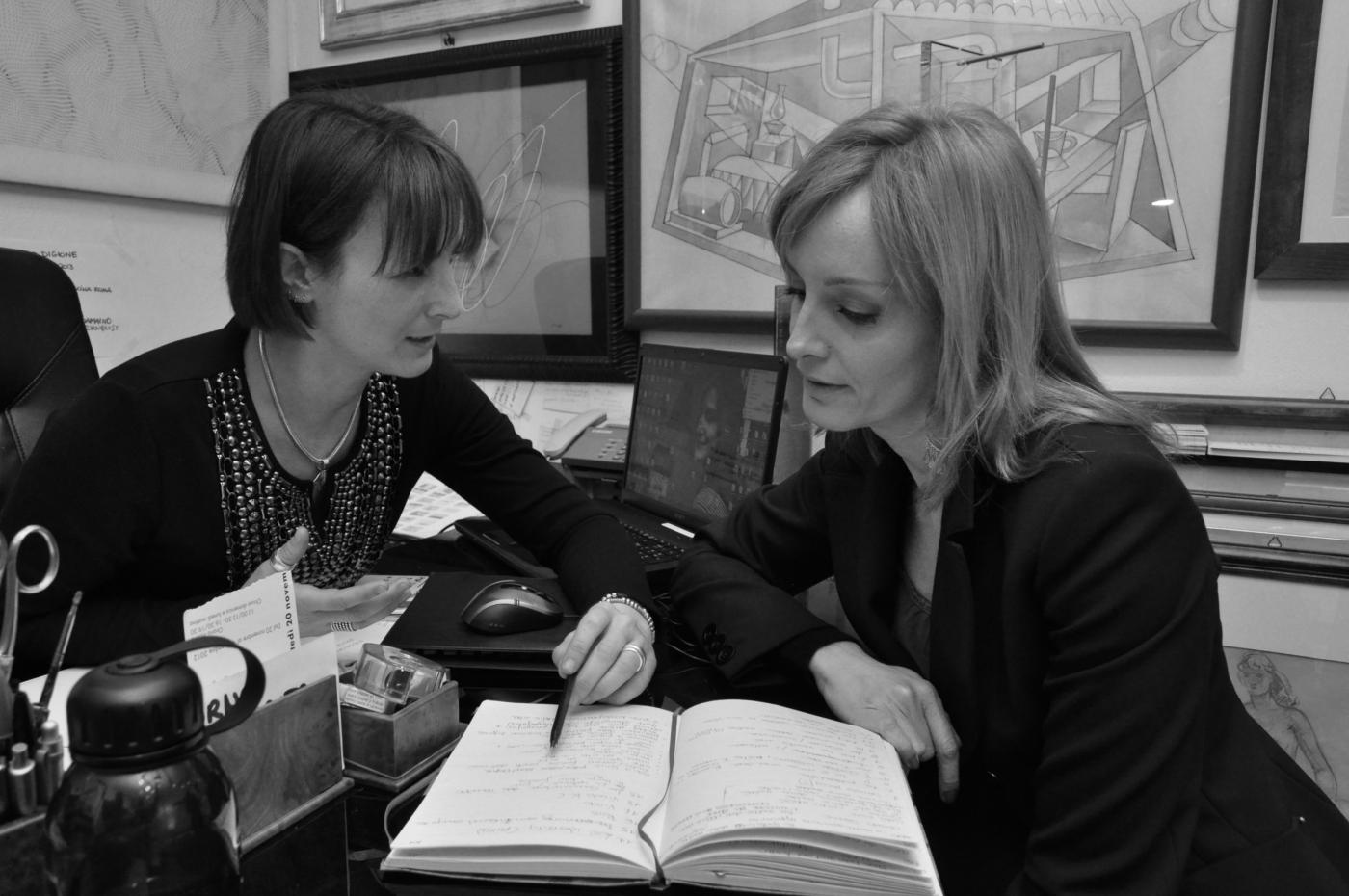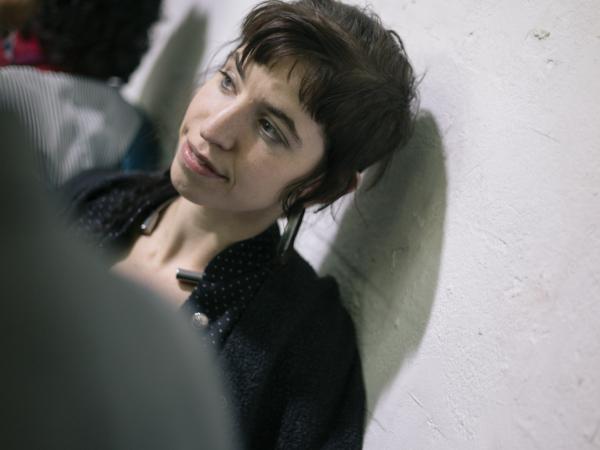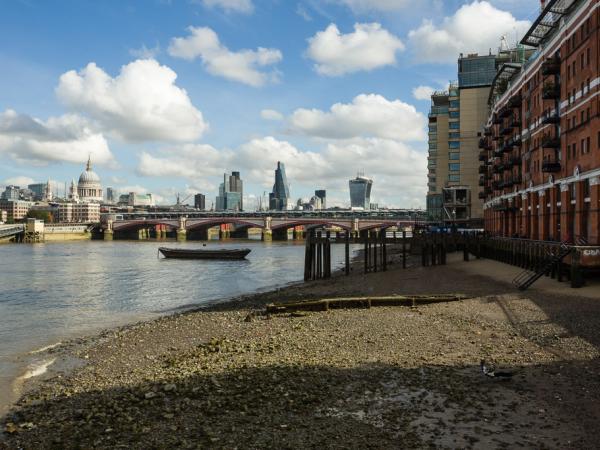C. S. – I use very few focused and defined details. There’s never any overcrowding in my landscapes, because I want to create surreal unrealistic atmospheres with few infringing elements and of the few that are there, each has the function to evoke something, they are never casual, never put there just to fill the empty space, but to create a particular atmosphere. I’m not interested in…I don’t need…to add realistic decorative elements. Staying figurative, however, I want to try and take myself out of reality. That which I paint is a more intimate reality, more mental than non physical and tangible. It is the reality of dreams. I objectify real places, remove unnecessary elements. Therefore, even if I start with a recognisable landscape, I always tend to purge it, making it an urban glimpse that can be of any city. Even the lights and architectural details are reduced to a minimum so I can concentrate more on the emptiness to highlight the sensation of alienation. They are images from dreams where very few essential things count; those that capture my attention. Therefore, these are the ones that I exclude from real images to make them live in my dreamlike scenes, accentuated even more by the fact that they are nearly all nocturnal landscapes or with particular lights, surreal where it’s not clear if it’s dawn or dust. Or neither. Something unnatural. Therefore, I’ve never painted broad daylight with a blue sky. Realistic representation is something that’s never interested me.
V. R. – The human element is always present even if it’s not obvious or is sometimes even oppressive. As in your previous works, is it always connected to the theme of maladjustment, of anxiety? Humanity in your paintings is sometimes depicted with excessive dimensions instead of being reduced to a minimum. What significance does this choice have?
C. S. – Awkwardness and alienation characterise my landscapes, which are lonely places. The urban presence is always connected to man’s maladjustment. This is the focal point of my research: in the places I create, I try to underline through the use of essential “scenography”, the emptiness around people. This is what I’m interested in representing, helped by inserting an human figure, which at times is oppressive and worrying, and at others almost indistinct but still present. Like in the painting in which a man, far from the viewer, walks away in the dead of night towards an horizon illuminated by shop lights symbolising a consolation, an ephemeral goal for those who are lonely.
Sometimes even where there aren’t any people, you feel, for example, if the human figure isn’t present, that there are instead some objects created for man’s use: like a car with the headlights on hinting that someone is sitting in the driver’s seat. While where I use the device of placing huge faces in the work, I’m trying to fix a state of mind connected to that environment, to create a connection to the place. This is the case in Clinic, where the setting is a home for the mentally ill and the face that takes up an entire window was taken from a medical magazine. It’s a stereotyped face expressing universal states of mind, like suffering and unease.
V. R. – Another fundamental element that characterises your paintings is the well-connoted colour spectrum that contributes – together with the light and subjects – to creating a dreamlike atmosphere.
You don’t leave anything to chance, you don’t paint “instinctively”, each layer of colour is studied and mediated on to give the desired emotional effect. The hues are completely different from the photographic starting points you use, therefore you transfigure reality also through the use of colour?
C. S. - My challenge is to be able to put the emotions on canvas also through the use of colour so that they transmit a sensation of anxiety, of temporal suspension, of angst. This is what I want to do. Mine are always an augmentation of colours from reality. Here’s an example: in a nocturnal environment the choice of using true black for the sky is because I really like exaggerating the chromatic graduations found in the real world, without ever making the palette too violent. This is something I’m very careful about. I try not to make the use of colour too strong, unless I want to bring attention to a precise point in the image. In those cases I also add a pure tone, like when I use yellow for the streetlights, windows and shop windows, but generally I tend to mix a lot.
V. R. – You always start from a photograph for the construction of your paintings. In rare cases, for example, in the aforementioned Clinic, you used photos from magazines and newspapers, but normally you take the photograph of the subjects which are destined to take form on the canvas. Therefore, the starting point is already your very personal point of view. How does the landscape take form from the photograph to the paintbrush? What remains of your photographs in your paintings? Do they become more distant from reality also because you use another device: the excluding of the lines and their geometricity. Tell me more about this…
C. S. – The photographic basis is only a prompt. I never reproduce the photograph exactly as it is. I try to give a geometric layout to the painting to highlight the prospective and the vanishing point. Sometimes I add elements that aren’t in the photograph, in other cases I remove them. The photograph is the starting point of my research, the beginning of a trip in evolution towards the creation of fantastic places that sometimes are the composite of more photos, real collages that I need to “construct” the painting. But even when I combine several photos, the painting will always be something else, something different. The scenes are always taken from photographs that I take myself. The gestation period of a painting is often long: the ideas ferment with time, they leave something then reach maturation and the painting arises. Often, even before I take the photo, I have an idea in mind of the ideal landscape and then go in search of the right place to immortalise and then begin to work with my paintbrushes. I look for public places because daily life inspires me, and I also like to recreate it in a dreamlike manner. This is fundamental for me, because the dreamlike aspect is that in which I see myself the most. Therefore, I exaggerate some details to create geometry on the canvas – though keeping it absolutely figurative – which contain abstract elements from the context in which they are placed thanks to the geometricity of the forms that are no longer recognisable as elements from reality because I deliberately brought them to their essential lines to transfigure them, thus creating a visual awkwardness, a non-definition of the place. The device of adding geometric elements in figurative paintings is useful for me to highlight the distance from reality. At the same time, I leave many other elements completely recognisable. This is instead to create a connection to the real world. Recently what I’m trying to do is merge the abstract-geometric of some particulars with the figurative. I find this sort of purging of the lines that become so clear, so sharp, so cold, highlight the state of mind and sensations of unease and alienation.
V. R. – What would you like the observers to take from your works?
C. S. – In my paintings what you see is the “external” reality, but in effect what counts isn’t even represented on the canvas, it goes beyond because I really like stimulating the imagination of the viewer. More than the representation as an end to itself, painting something that already says it all, I prefer to raise perplexity, questions, reflections. But the viewer also puts himself on the line and has to put something of himself into it. I try to inspire emotions.







Comments 0
Say something